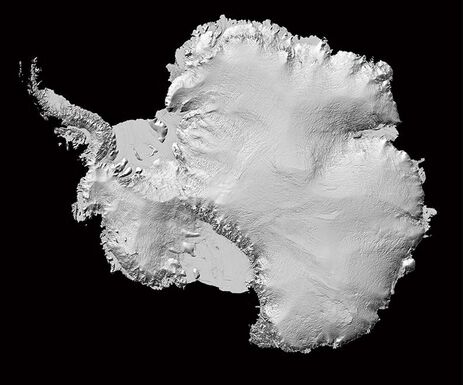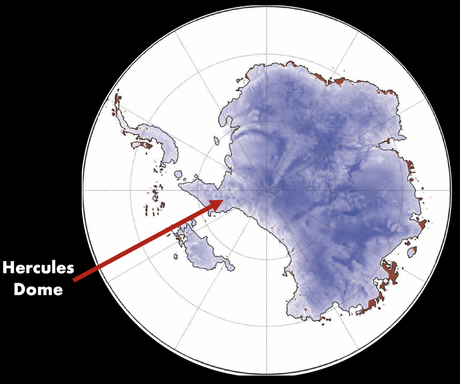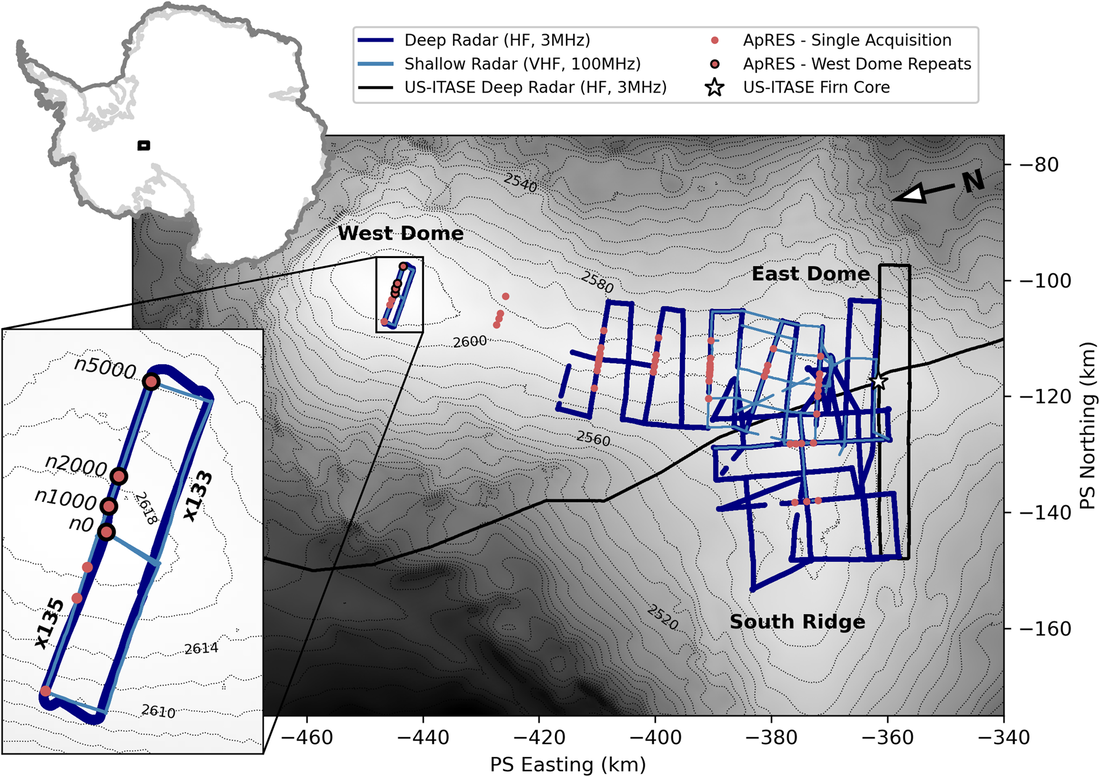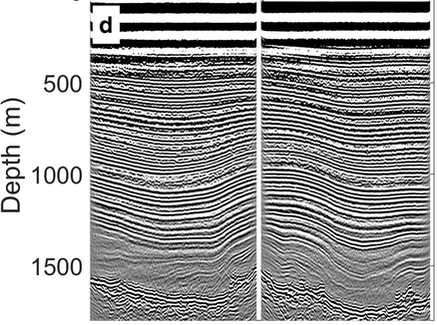Background
Glaciers on the West Antarctic Ice Sheet are rapidly retreating. Combined with the unideal topography of the bedrock beneath the ice sheet, West Antarctica is the most vulnerable ice sheet on Earth, with a potential to contribute up to 5 meters of sea level rise if fully collapsed. The complexities of the processes that affect the ice sheet make it very difficult to predict how stable it is. One particularly important question that remains unanswered is whether West Antarctica collapsed during the last warm period on earth-- roughly 130,000 years ago.
It has been proposed that a deep ice core drilled at Hercules Dome (shown in map below) would be well-situated to provide empirical evidence to answer this question, as it likely would have contained sufficient ice during the last warm period, and it would have been close enough to the region of collapse to detect changes in climate that can be measured in an ice core.
It has been proposed that a deep ice core drilled at Hercules Dome (shown in map below) would be well-situated to provide empirical evidence to answer this question, as it likely would have contained sufficient ice during the last warm period, and it would have been close enough to the region of collapse to detect changes in climate that can be measured in an ice core.
Present Day AntarcticaElevation map of Antarctica from REMA1 (Reference Elevation Model of Antarctica).
|
Scenario with West Antarctic CollapseModeled elevation of Antarctica during the last warm period (~130,000 years ago) from DeConto and Pollard, 2016. Areas of white are below sea level. Hercules dome is shown on the map, lying between East Antarctica and a mostly-collapsed West Antarctica.
|
Results
I was part of the field team that went to Hercules Dome in winter of 2019-2020 to do geophysical surveys to determine a precise location to drill the ice core, which will be ~1.5 to 2 km deep. We camped on the ice sheet for about 30 days, conducting surveys with various types of ice-penetrating radar all over the dome. We collected about 600 km of deep radar data ("deep" meaning we can see all the way to the bedrock). These data allow us to see the layers of ice beneath us, allowing us to pick an optimal ice core site.
Site selection and analysis of the geophysical data we collected is ongoing, and preliminary results from our geophysical survey are published in Fudge et al. (2022). A location in the West Dome region has been selected as a promising location to drill the ice core. It appears to have simple and undisrupted layers of ice, meaning that drilling an ice core there would likely allow for a continuous reconstruction of past climate from a single location. It also appears to be frozen at the bedrock, suggesting that the deepest layers of ice have been preserved and that there is potential for getting ice from 130,000 years ago.
Site selection and analysis of the geophysical data we collected is ongoing, and preliminary results from our geophysical survey are published in Fudge et al. (2022). A location in the West Dome region has been selected as a promising location to drill the ice core. It appears to have simple and undisrupted layers of ice, meaning that drilling an ice core there would likely allow for a continuous reconstruction of past climate from a single location. It also appears to be frozen at the bedrock, suggesting that the deepest layers of ice have been preserved and that there is potential for getting ice from 130,000 years ago.
|
Figure 1 from Fudge et al. (2022) showing the locations of the ice-penetrating radar surveys we conducted at Hercules Dome. Although most of our transects lie near East Dome and South Dome, closer to our camp (shown by the star), West Dome has been identified as a promising location to drill a deep ice core.
|
Figure 2 from Fudge et al. (2022) showing the undisrupted ice layers from a radargram at West Dome.
|
Analyses and additional data collection from the field are ongoing. See the Hercules Dome ice core website for more details.
See my field work page for photos and video of our field season.
See my field work page for photos and video of our field season.




